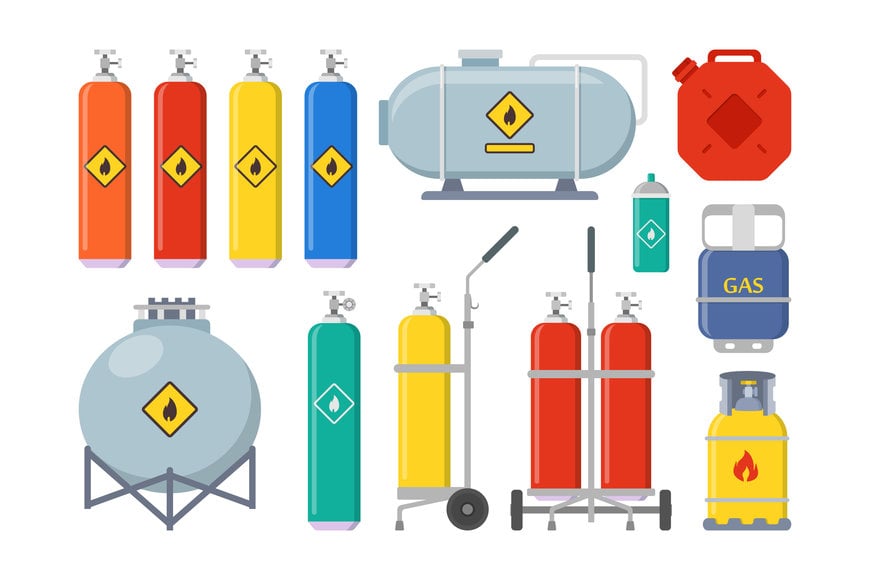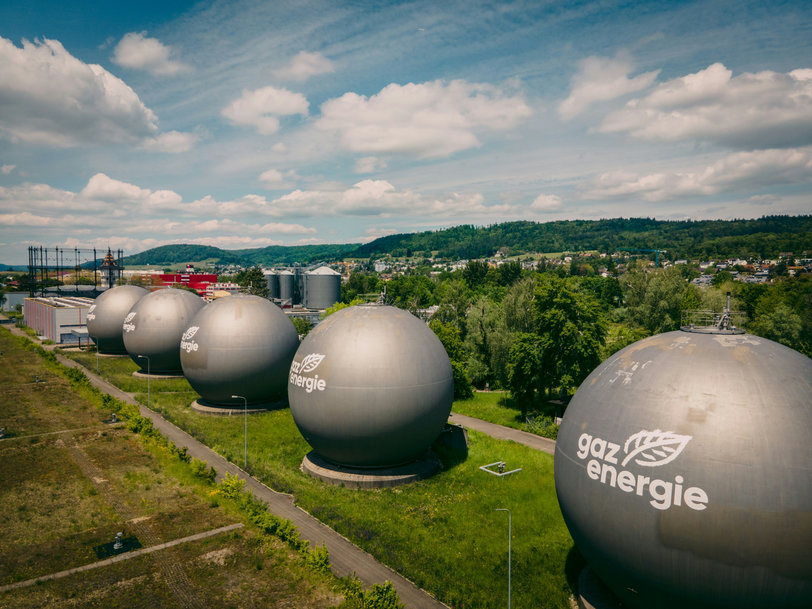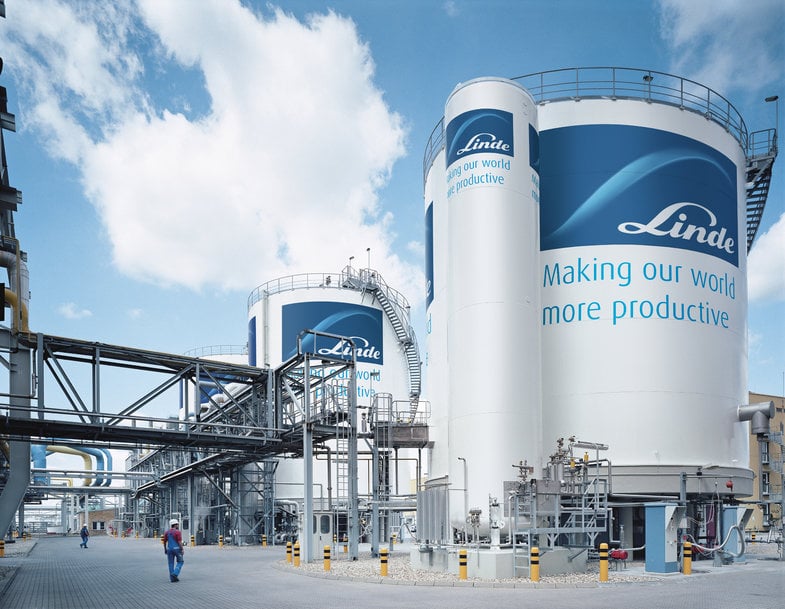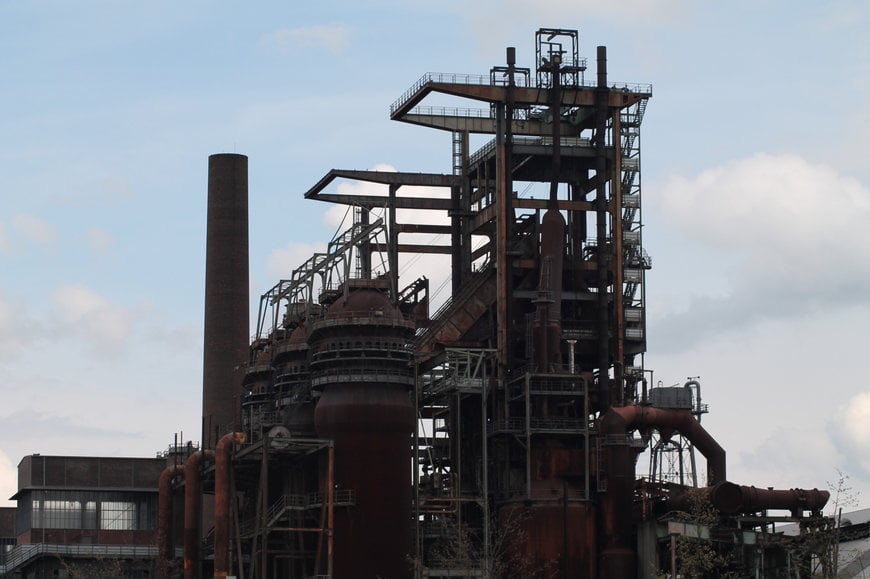Gas Consumption in Industries – Challenges & Sustainable Solutions
Industrial gases are essential to human progress as they serve vital industry needs as well as the healthcare sector, says Milton D’Silva.

The universe has evolved over billions of years. Image by Freepik
The world is made up of matter. Matter is any substance that has mass and takes up space. Gas is one of the four fundamental states of matter, the other three being solid, liquid, and plasma. According to the Big Bang theory, the universe started as a single point and expanded to what it is today. It was all in a gaseous state – the gas, mostly hydrogen and helium, held together by gravity – just like the Sun, a huge ball of hydrogen and helium. Then over billions of years some things cooled down and settled as planets and one of them is the Earth we inhabit – and it is formed of matter and gas is one of its fundamental states! The atmosphere we are covered with, the very air we breathe, is a mixture of gases – mainly nitrogen and oxygen, but also many other gases in smaller percentages – argon, carbon dioxide, neon, helium, methane, krypton, hydrogen and xenon, among others. So we are a product of all the gases that exist and we depend on them for a living.
Gases come in all types and variants. There is a laughing gas – Nitrous oxide – that can make one laugh, but only for some time before the euphoria makes way to numbness of the senses. There is also crying gas or tear gas and its many variants, commonly used by law enforcement agencies and also for self-defence in the pepper spray version. Law enforcement in some countries also uses gas for execution of hardcore criminals. Worse, the diabolical human mind has also used gas to inflict mass death on their own as is evident from horrors of the gas chambers used by the Nazis. If not careful in handling and storage, gases can also cause disasters, like the one at Bhopal in India in 1984, when the highly toxic methyl isocyanate (MIC) gas leaked from the Union Carbide plant killing thousands, maiming many times more, and the consequences still borne by the survivors 40 years later. However, this article is about industrial gases and the various aspects related to their use in various applications.

Different types of storage for industrial gases. Designed by pch.vector on Freepik
Classification of gases
Industrial gases are classified based on their properties, applications, and production methods. The classification can vary, but commonly, industrial gases are categorised into several groups:
- Permanent Gases: These gases remain in a gaseous state under normal temperature and pressure conditions. Examples include nitrogen, oxygen, hydrogen, and noble gases like helium, neon, argon, krypton, and xenon.
- Hydrocarbon Gases: Includes gases composed of hydrogen and carbon atoms. Examples include methane, ethane, propane, and butane.
- Flammable Gases: Gases that can ignite and burn in the presence of oxygen or another oxidising agent. Examples include hydrogen, acetylene, and methane.
- Inert Gases: Gases that are generally non-reactive and do not readily participate in chemical reactions. Examples include nitrogen, argon, helium, and xenon.
- Refrigerant Gases: Gases used in refrigeration and air conditioning systems to absorb and release heat during phase changes. Examples include ammonia, carbon dioxide, and hydrofluorocarbons.
- Toxic Gases: Gases that can pose health hazards when inhaled or come into contact with the body. Examples include ammonia, chlorine, and hydrogen sulfide.
- Noble Gases: Inert gases with low reactivity. Examples include helium, neon, argon, krypton, and xenon.
Besides those described above, there are specialty gases produced for specific industrial applications with high purity requirements. Examples include calibration gases, laser gases, and electronic gases. There are also mixed gases that are a combination of two or more individual gases to meet specific requirements.
The classification may also take into account factors such as pressure, temperature, and intended use. However, a word of caution regarding this classification which may, at best, be considered general; there could be country- or region-specific standards and industry practices that may influence how industrial gases are classified and regulated.

Bulk gas storage in spherical gas tanks. Photo by Patrick Federi on Unsplash
Applications of industrial gases
A variety of gases, based on their properties and attributes, play important roles in different industries thanks to their unique properties. These are used at some stage or other, in almost all manufacturing and process industries. They support a wide range of applications, contributing significantly to the global economy and daily life. Some of the main application areas of industrial gases are:
- Chemical Processes: Many industrial processes involve chemical reactions that require specific gases as reactants or as part of the reaction environment. For example, nitrogen, hydrogen, and oxygen are commonly used in chemical manufacturing.
- Heat Treatment: Gases like oxygen and acetylene are essential for processes such as oxyfuel welding and cutting. They provide the necessary heat for metal cutting, welding, and other heat treatment processes.
- Inert Atmospheres: In certain manufacturing processes, an inert atmosphere is required to prevent unwanted chemical reactions. Gases like nitrogen and argon are often used to create inert atmospheres in industries such as electronics and metalworking.
- Cooling and Refrigeration: Gases like ammonia and fluorocarbons are used in industrial refrigeration systems. These gases play a vital role in maintaining specific temperature conditions required for various manufacturing processes.
- Power Generation: Natural gas is a widely used fuel in power generation plants. It is burned to produce steam, which then drives turbines to generate electricity. Other gases like hydrogen are also being explored for clean energy applications.
- Medical and Healthcare: Gases such as oxygen, nitrogen, and nitrous oxide are crucial in the healthcare industry for medical gases, anesthesia, and respiratory therapy.
- Metal Production: In metal industries, gases are used for processes like smelting and refining. Carbon monoxide, for instance, is often used in the production of iron and steel.
- Food and Beverage Industry: Gases like carbon dioxide are used in the food and beverage industry for carbonation of beverages and to extend the shelf life of certain products.
- Environmental Monitoring: Gases are used in environmental monitoring and analysis. For example, sensors and detectors often rely on gases like methane for detecting leaks and ensuring safety.
- Electronics Manufacturing: Gases are used in the electronics industry for processes like semiconductor manufacturing and plasma cutting. For instance, high-purity gases like nitrogen and argon are used in the production of integrated circuits.
- Air Conditioning and HVAC Systems: Various gases, including refrigerants, are used in air conditioning and heating, ventilation, and air conditioning (HVAC) systems to regulate temperature and humidity.
- 3D Printing: In recent years, this is an emerging market for inert gases like argon and nitrogen to create a controlled printing environment, as the popularity of 3D printing is rising. These gases prevent oxidation and contamination, ensuring the integrity and quality of the final product. Additionally, advancements in 3D printing technology are leading to the development of specialised gas mixtures tailored to specific materials and printing processes.
It is thus seen that the diverse properties of gases make them useful in a wide range of industrial applications, contributing to processes that manufacture products, help measure various parameters, generate energy, and support various essential functions in different sectors.

A Linde gases facility in Leuna, Germany. Photo: Linde Media
Specific gases and applications
As seen in the preceding paragraphs, a variety of gases are used in industries, each one playing a different role, but nonetheless important to serve the given purpose. Described here are some of the key gases used in industry and the applications they serve:
Oxygen (O2): Essential for combustion in various industrial processes, such as metal smelting, welding, and chemical manufacturing. Applications: Used in steel production, medical facilities, water treatment, and as an oxidizer in rocket propellants.
Nitrogen (N2): Inert gas with applications in preventing oxidation, purging pipelines, and blanketing sensitive materials. Applications: Used in food packaging, electronics manufacturing, pharmaceuticals, and as a coolant in certain processes. The construction industry uses nitrogen in the construction of tunnels.
Hydrogen (H2): Versatile gas used as a reducing agent, fuel, and in various industrial processes. Applications: Hydrogen is mostly used in oil refining and manufacturing of fertilizers and chemicals. It is used as a feedstock in the production of two industrial chemicals, viz., ammonia and methanol. In refineries, it is used in various hydro-desulfurization (HDS) and hydrocracking procedures. Today, it is also being used as a fuel in fuel cells powering clean mobility.
Carbon Dioxide (CO2): Essential for processes like carbonation, as well as in refrigeration and food preservation. Applications: Used in the food and beverage industry, as a welding shielding gas, and in enhanced oil recovery.
Methane (CH4): Primary component of natural gas, serving as a crucial energy source. Applications: Used for heating, electricity generation, and as a feedstock in the production of chemicals and plastics. Methane can also be used for vehicular transportation – research indicates a methane-powered combustion engine could produce 20% fewer emissions than a conventional petrol car.
Helium (He): Inert, non-flammable gas with unique properties, including low boiling point and high thermal conductivity. Applications: Used in cryogenics, cooling in medical MRI machines, and as a lifting gas in balloons and airships. Other industrial uses of helium are as a pressurising and purge gas, as a protective atmosphere for arc welding, and in processes such as growing crystals to make silicon wafers in semiconductor industry.
Chlorine (Cl2): Essential for water purification and in the production of various chemicals. Applications: Used in the manufacture of PVC, disinfecting drinking water and in commercial and industrial water cooling systems. It is also used in washing meat, fresh produce and seeds to control decay-causing microorganisms, and extensively as a bleaching agent in the paper and textile industries.
Argon (Ar): Inert gas with applications in welding and as a protective atmosphere for certain processes. Applications: Argon is one of the most cost-effective and commonly used welding gases and is suitable for many different welding processes as a shielding gas. It is also used in metal fabrication, and semiconductor manufacturing.
Propane (C3H8): Propane is made from natural gas or crude oil refinement. It is a hydrocarbon and has numerous commercial and industrial uses. Applications: Used mainly for domestic/commercial water heating, cooking and refrigerating food, clothes drying, and powering farm and industrial equipment.
Butane (C4H10): Like propane, butane is also made from the processing of natural gas or crude oil and has a large number of commercial and industrial uses. Applications: Used as typically as fuel for cigarette lighters and portable stoves, a propellant in aerosols, a heating fuel, a refrigerant, and in the manufacture of a wide range of products.
Industrial gases play a crucial role in numerous manufacturing processes, supporting industries ranging from healthcare to electronics and energy production. However, their use also presents a myriad of challenges that demand careful consideration to ensure safety, efficiency, and environmental responsibility.

Steel mills use a lot of oxygen. Image by Jürgen Böckler from Pixabay
Challenges
One significant challenge is the handling and transportation of industrial gases. Many of these gases are hazardous and require specialised equipment and infrastructure to maintain their integrity and prevent leaks. For instance, liquefied gases such as liquid nitrogen and liquid oxygen must be stored and transported in cryogenic tanks to maintain their low temperatures. Ensuring the proper design, construction, and maintenance of these facilities is essential to avoid accidents and protect both workers and the surrounding environment.
Safety concerns extend to the manufacturing and processing stages. Certain industrial gases are highly reactive (surface ozone, carbon monoxide, nitrous oxides) or flammable (hydrogen, butane, methane), posing risks of explosions or combustion. Proper ventilation, equipment design, and monitoring systems are necessary to minimise the likelihood of accidents. Additionally, the potential for toxic gases released during production calls for stringent safety protocols and emergency response plans.
Environmental impact is another significant challenge associated with the use of industrial gases. Certain gases contribute to air pollution and climate change when released into the atmosphere. For example, the production and use of nitrous oxide, a greenhouse gas, are of concern due to its impact on global warming. Companies using such gases must adopt sustainable practices, invest in emission control technologies, and comply with regulations to mitigate their environmental footprint.
The storage of industrial gases poses its own set of challenges. Gases must be stored at specific pressures and temperatures to maintain their stability and prevent degradation. Additionally, the design and construction of storage facilities must account for factors such as corrosion resistance and compatibility with the stored gases. Improper storage can lead to leaks, which not only pose safety risks but also contribute to environmental pollution.
Quality control is a critical challenge in the production and distribution of industrial gases. Many applications require gases of high purity, and any contamination or variation in composition can compromise the end product. Stringent quality control measures, including regular testing and monitoring, are essential to ensure the consistency and reliability of industrial gases.
The global nature of the industrial gas industry introduces logistical challenges. Gases often need to be transported across long distances, requiring a well-established supply chain. The complexity of coordinating production, transportation, and delivery can lead to inefficiencies, delays, and increased costs. Developing robust logistics strategies and investing in advanced tracking technologies can help address these challenges.
Regulatory compliance is a constant concern in the industrial gas sector. The production, transportation, and use of certain gases are subject to strict regulations to safeguard public safety and environmental health. Companies must stay abreast of evolving regulations, obtain necessary permits, and implement compliance measures to avoid legal consequences and reputational damage.
In general, while industrial gases are indispensable in various industrial processes, their use presents a host of challenges. From safety and environmental concerns to logistical and regulatory complexities, addressing these challenges requires a comprehensive approach that combines technological innovation, rigorous safety measures, and a commitment to sustainability. As industries continue to rely on industrial gases for their processes, the proactive management of these challenges is imperative for the well-being of workers, communities, and the planet.

3D printing is an emerging consumer of certain types of gases. Image by vecstock on Freepik
Managing hazards with sustainable solutions
Managing hazards associated with industrial gases is crucial for ensuring safety and sustainability. Here are some sustainable solutions to address these hazards:
- Substitution with Safer Alternatives: Identify and use less hazardous gases whenever possible.
- Replace toxic or flammable gases with safer alternatives that have lowered environmental and health risks.
Engineering Controls: Implement engineering solutions such as process redesign, isolation, and ventilation systems to control the release of gases. Use containment systems to prevent leaks and spills.
Risk Assessment and Management: Conduct thorough risk assessments to identify potential hazards and their associated risks. Develop and implement comprehensive risk management plans to mitigate and control identified risks.
Emergency Response Planning: Establish and regularly update emergency response plans to effectively manage and mitigate incidents involving industrial gases. Conduct regular drills and training sessions to ensure preparedness.
Monitoring and Detection Systems: Install monitoring and detection systems to identify gas leaks promptly. Implement alarm systems and automatic shut-off mechanisms to respond quickly to abnormal gas levels.
Personal Protective Equipment (PPE): Provide appropriate PPE for workers handling or exposed to industrial gases. Ensure proper training on the correct use of PPE and enforce its usage in high-risk areas.
Regulatory Compliance: Stay compliant with local, national, and international regulations governing the handling, storage, and transportation of industrial gases. Regularly update practices to align with evolving safety standards.
Green Chemistry Practices: Embrace green chemistry principles to design and use chemicals and processes that minimise environmental impact. Opt for sustainable and environmentally friendly manufacturing processes.
Waste Minimisation and Recycling: Implement practices to minimise the generation of waste gases. Explore opportunities for recycling or reusing certain gases within the industrial processes.
Community Engagement and Communication: Establish transparent communication channels with the local community to inform them about potential hazards and risk mitigation measures. Engage with stakeholders to address concerns and incorporate feedback into safety measures.
Continuous Improvement: Regularly review and update safety protocols and procedures based on incidents, near misses, and lessons learned. Foster a culture of continuous improvement and learning within the organisation.
Energy Efficiency: Optimise processes to enhance energy efficiency, which can indirectly reduce the risks associated with the generation and use of industrial gases. By adopting a holistic approach that combines these sustainable solutions, industries can effectively manage and mitigate hazards associated with industrial gases while promoting safety and environmental responsibility.
A growing market
According to Vantage Market Research, the global Industrial Gases Market is valued at USD 97.52 bn in 2022 and is expected to reach a value of USD 158.35 bn by 2030, at a CAGR of 6.3% during the forecast period. It is a booming industry and other market reasearch agencies have similar figures and CAGR estimates.
Among the major players in the global industrial gases market are companies such as: INOX Air Products, Messer, Linde Group, Air Liquide, Iwatani Corporation, Taiyo Nippon Sanso, Gulf Cryo, BASF SE, SOL Group, Air Water, Masteel Group, Praxair, Airgas Inc, Yingde Gases, Buzwair Industrial Gases, Chemix Gases, Hangzhou Oxygen Plant Group, and Norco Inc.
The industrial gases market has been experiencing growth for several reasons, driven by a combination of economic, technological, and environmental factors. Here are some key reasons for the growth of the industrial gases market:
Increasing Industrialisation: The global trend towards industrialisation, particularly in developing economies, has led to a rise in manufacturing activities across various sectors. Industrial gases are essential for numerous industrial processes, such as metal fabrication, chemical production, and electronics manufacturing, contributing to the market's growth.
Rising Demand in Healthcare: The healthcare industry relies on industrial gases for various applications, including medical oxygen, anesthesia gases, and respiratory therapies. The growing global population, coupled with an aging demographic, has increased the demand for healthcare services, thereby boosting the demand for industrial gases used in medical applications.
Technological Advancements: Advancements in technology have expanded the range of applications for industrial gases. For example, the use of industrial gases in semiconductor manufacturing, 3D printing, and other high-tech industries has increased as these sectors continue to evolve and grow.
Environmental and Energy Applications: Industrial gases play a crucial role in environmental and energy-related applications. For instance, hydrogen and nitrogen are used in clean energy technologies, such as fuel cells and solar cell manufacturing. Additionally, industrial gases are employed in environmental control processes, like wastewater treatment and flue gas desulfurization.
Globalisation and International Trade: The interconnected global economy and international trade have facilitated the exchange of goods and services across borders. Industrial gases are integral to various manufacturing processes, and as companies expand their operations globally, the demand for industrial gases has increased.
Stringent Safety and Quality Standards: Industries are becoming more conscious of safety and quality standards. Industrial gases are subject to strict regulations and standards to ensure their safe handling and use in various applications. Compliance with these standards has driven the adoption of industrial gases in industries where precision and safety are paramount.
Emergence of New Applications: Ongoing research and development efforts have led to the discovery of new applications for industrial gases. This continuous innovation has expanded the market by creating opportunities in industries that previously did not heavily rely on industrial gases.
Focus on Sustainable Solutions: The growing emphasis on sustainability and environmental responsibility has led industries to seek greener alternatives. Industrial gases, such as hydrogen, are increasingly considered as clean energy carriers, driving demand in industries looking to reduce their carbon footprint.
Infrastructure Development: Investments in infrastructure development, such as construction and transportation projects, often require industrial gases for welding, cutting, and other construction-related processes. As global infrastructure development continues, so does the demand for industrial gases.
These factors, combined with ongoing economic and technological developments, contribute to the overall growth of the industrial gases market.
Conclusion
As seen in the introductory paragraph of this article, the universe has evolved from a mixture of gases and continued to thrive since. Industrial gases are essential to human progress as they serve vital industry needs as well as the healthcare sector. At the same time, there are a lots of risks associated with some of the gases that are quite dangerous to human health and nature. Identifying the potential risks and the threats they represent is essential before harnessing a particular gas and then putting in place a mechanism to deal with the consequences, should something go wrong. There are enough tools of technology to help gas detection and sound the alarm bells in order to protect personnel and property from dangerous gases while maintaining profitable operations.
References
1. https://en.wikipedia.org/wiki/Industrial_gas
2. https://www.vantagemarketresearch.com/industry-report/industrial-gases-market-0301
3. https://www.linde.com/news-media

